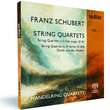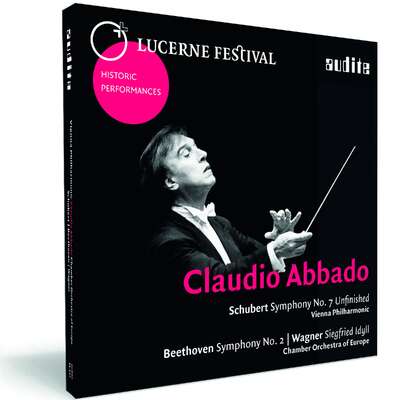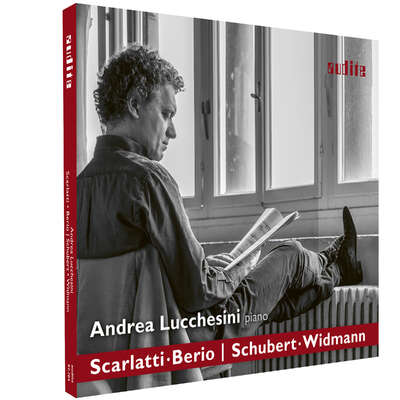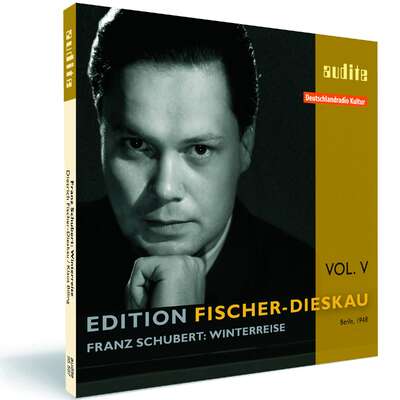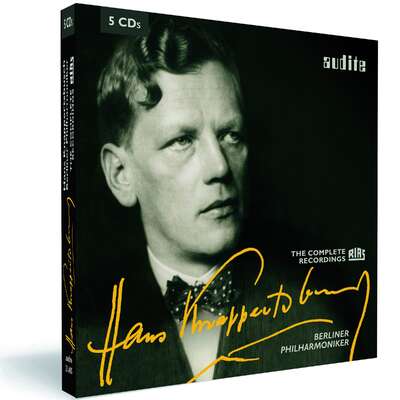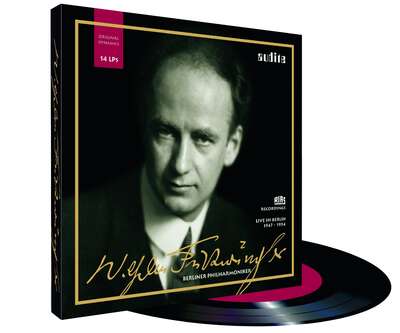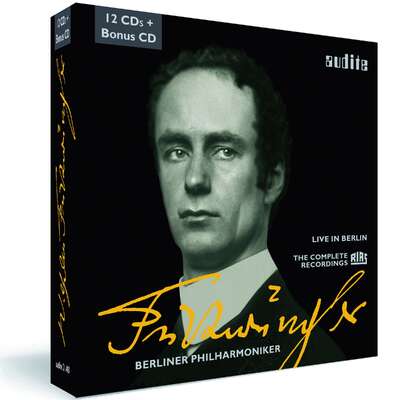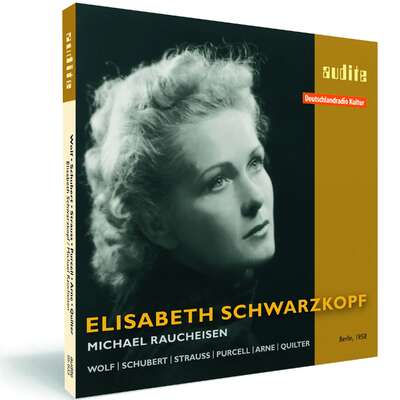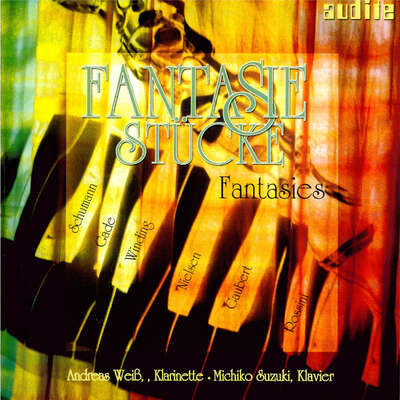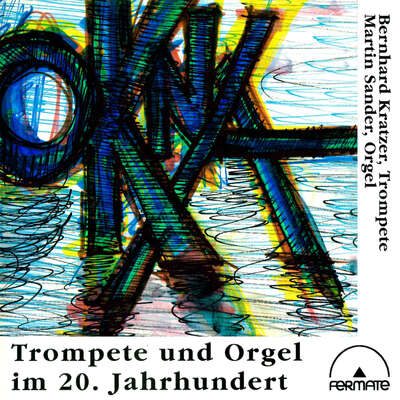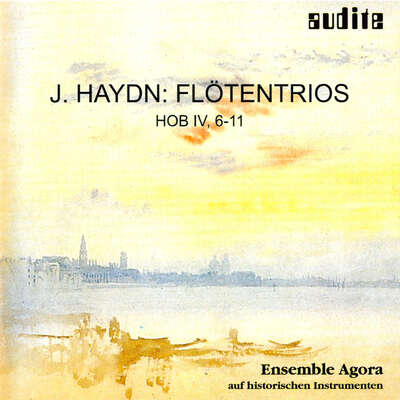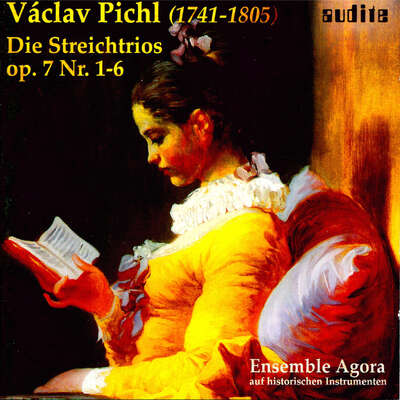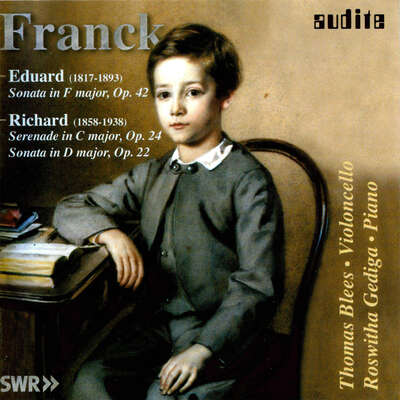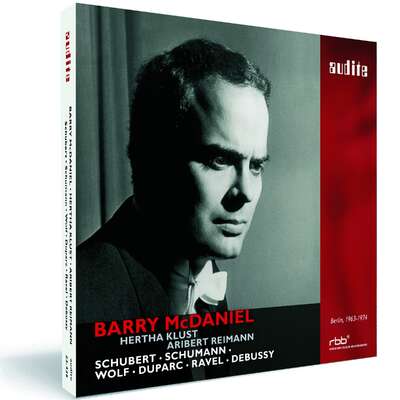
"Damit so unbekannte Stücke zu leuchten beginnen, braucht es eine gehörige Portion Klangfantasie: Hat man die Interpretation durch das Mandelring Quartett gehört, fragt man sich, warum sie nicht längst zum Standard-Repertoire gehören." (Deutschlandradio Kultur)
Details
| Franz Schubert: String Quartets Vol. I | |
| Artikelnummer: | 92.507 |
|---|---|
| EAN-Code: | 4022143925077 |
| Preisgruppe: | ACX |
| Veröffentlichungsdatum: | 4. Juni 2008 |
| Spielzeit: | 69 min. |
Zusatzmaterial
Besprechungen
BBC Music Magazine | January 2019 | Erik Levi | 1. Januar 2019
Franz Schubert: Death and the Maiden
Three other great recordings and one to avoid...
The German Mandelring Quartett enjoy the benefits of a superbly vivid SACD recording and the playing, particularly in the more lyrical sections of theMehr lesen
Der Reinbeker | 17. Mai 2010, Nr. 9 | Peter Steder | 17. Mai 2010 Jazz und Klassik
„Chesky Records“ gehört unbestritten zu den führenden audiophilenMehr lesen
ouverture Das Klassik-Blog | Mittwoch, 2. Dezember 2009 | reagenz | 2. Dezember 2009
Endlich ist es dem Rezensenten gelungen, ein Abspielgerät aufzutreiben, inMehr lesen
Fanfare | Friday, 24 July 2009 | Steven E. Ritter | 24. Juli 2009
After several pleasant encounters with the Mandelring’s Shostakovich series (also on Audite), I had high expectations for this new Schubert quartetMehr lesen
Lynn René Bayley ( Fanfare 32:1) was tripping all over herself for superlatives when reviewing the recent issue of this piece by the Jerusalem Quartet (Harmonia Mundi) and proves exactly right. I came to the same conclusions for another non- Fanfare review, and think it simply the finest on the market, a fiery and tempestuous rendition of superlative beauty and wonderfully couched athleticism. It’s hard to go back to the old favorites, which would include the Tokyo and Alban Berg readings, after hearing this one. Before I start tripping also—and the Jerusalem recording seems to incite one to this—let me simply offer it up as the reading to have if you are only having one.
But let’s get back to the Mandelring, certainly no slouch as a quartet, just outgunned by one of the more remarkable recordings of the year on HM. This current issue, though lead-worn by the maiden’s death, proves its mettle when we hear the early E♭ Quartet (1813), pristinely free of any burnt rubber tracks coming off the smoking “Death.” We are back to the world of Haydn and Mozart, sunning ourselves in the radiance of Schubert’s First Symphony. Though Schubert being Schubert still displays some strangely and tantalizing melodic quirks (especially in the bratty Scherzo and the first Adagio in the composer’s quartets), the rich smell of a cup of Viennese coffee perfumes each movement of this all’s-right-with-the-world composition. The Mandelrings have this one down pat, and the aforementioned purity of tone rings in heavenly places throughout their performance.
I have to assume that “Death and the Maiden” was simply a flawed concept, for this group should have sent it burning skyward. As is, the example of the 1813 work proves a flawed but still curiously optimistic opening to a complete quartet salvo. Audite being an audiophile label certainly makes up for some of the distresses on this disc (you are there in the hall), and I plan to keep it, but Jerusalem’s foil was a case of bad timing for all concerned here.
American Record Guide | July/August 2009 | Althouse | 1. Juli 2009
Schubert's early quartets were written for his family quartet, Franz playing the viola. With the Mandelring Quartet we come very close to theseMehr lesen
The Mandelrings have an affinity for Schubert. They phrase gracefully and avoid pushing tempos, thus giving the music a chance to breathe. Following with a score, I noted they are meticulous in observing Schubert's dynamic markings and rhythmic intricacies.
While this is certainly a good performance, I would not place it above several on my shelf: Emerson and Italiano come to mind. Neither of those observes the exposition repeat (which with the Mandelring results in an opening movement of almost 17 minutes), and the Audite recording has an up-close graininess to the sound that is well below the quality of the others. In fairness I should report that Audite's is a hybrid disc, and I haven't heard it as an SACD.
The E-flat Quartet is quite a nice piece, particularly in this performance. It is easy to judge this teenager's piece as juvenilia, feel a bit nervous about its quality, and push it to stimulate excitement and avoid tedium. The Mandelring, though, seem to take the piece more seriously. They don't press tempos or strive for effect, so the music unfolds naturally and beautifully. The thematic material isn't particularly distinctive, but the execution is beautifully done, with no hitches or embarrassing moments.
In sum, then, a good recording, but not one I would urge on you.
Scherzo | abril 2009 | Josep Pascual | 1. April 2009
Dos versiones muy distintas de La muerte y la doncella. Una,Mehr lesen
CD Compact | Enero 2009 | Verónica Maynés | 1. Januar 2009
Audite presenta el primer volumen de la que se supone -a falta de laMehr lesen
Rondo | 10/2008 | Thomas Rübenacker | 6. Oktober 2008
Diese zwei Neuaufnahmen von Schuberts „Tod und das Mädchen“-QuartettMehr lesen
Concerti – Das Hamburger Musikleben | Oktober 2008 | Eric Schulz | 1. Oktober 2008
Mandelring 69
Festkonzert des Mandelring Quartetts anlässlich seines 25-jährigen Bestehens
"Meine Mutter hatte ziemlich viel Ärger mit mir, aber ich glaube, sieMehr lesen
L'éducation musicale | n° 555-556 - septembre/octobre 2008 | 1. September 2008
Dans une interprétation d’un poignant dramatisme – admirableMehr lesen
Ensemble - Magazin für Kammermusik | 4/2008 | Carsten Dürer | 1. Juli 2008 Innere Ruhe & Kraft
Kaum hat man das Projekt mit der Gesamteinspielung allerMehr lesen
www.SA-CD.net | June 2008 | Polly Nomial | 17. Juni 2008
This disc has been a long time coming, both in respect of being the firstMehr lesen
schallplattenmann.de | Ausgabe #586 | Sal Pichireddu | 9. Juni 2008 Audiophiler Schubert
Warum diese Aufnahmen des pfälzischen Mandelring Quartetts 2003 zwar imMehr lesen
DeutschlandRadio Kultur - Radiofeuilleton | 23. Woche, Do. 05.06.2008, 11.20 – 11.30 Uhr | Christine Watty | 5. Juni 2008
Gleich nach dem Gespräch stellen wir Ihnen die gerade aufs Neue veröffentlichte Aufnahme eines Quartettes des ganz jungen Franz Schubert vor: DasMehr lesen
[Quartett Es-Dur 2.Satz, 1.16]
Hartgesottene Streichquartettfreunde haben die Aufnahmen des Mandelring-Quartetts von Franz Schubert vielleicht schon im Regal: Seit gestern ist auch die erste der drei Platten, vor drei Jahren noch als konventionelle CD erschienen, aufs Neue im Handel, diesmal als SACD, also im Surround-Sound von allen Seiten zu hören. Das Besondere aller drei CDs: Immer eines der berühmten Quartette aus der späten Zeit ist mit einem der weniger bekannten des ganz jungen Schuberts gekoppelt, und da gibt es wahre Entdeckungen:
[Quartett Es-Dur 4. Satz, 2.37]
Der Schlusssatz aus dem frühen Es-Dur-Quartett, gespielt vom Mandelring Quartett.
Der Vater, der Volksschul-Lehrer, spielte die erste Geige, die Brüder zweite Geige und Cello, Franz Schubert die Bratsche, und alles was in jener Zeit neu war, kam auf die Notenpulte – Haydn, Schubert, auch die frühen Beethoven-Quartette. Und natürlich das, was das 16-jährige Bürschchen, dem die Lehrerausbildung offensichtlich nicht besonders zusagte, extra für das Familienquartett komponierte.
Elf Quartette sind in jenen Jahren entstanden, und nicht alles lohnt die Wiederaufführung, sagt Bernhard Schmidt, der Cellist des Mandelring Quartetts, und das ist auch der Grund, warum sich das inzwischen weltberühmte Quartett nicht für eine Gesamtausgabe entschieden hat, sondern immer eines der drei großen Quartette aus der späten Zeit mit einer Überraschung aus dem Frühwerk koppelt; auf dieser Wiederveröffentlichung sind das das d-Moll-Quartett „Der Tod und das Mädchen“ und eben das Es-Dur-Quartett aus dem Herbst 1813. Damit so unbekannte Stücke zu leuchten beginnen, braucht es eine gehörige Portion Klangfantasie: Hat man die Interpretation durch das Mandelring Quartett gehört, fragt man sich, warum sie nicht längst zum Standard-Repertoire gehören.
Der Mandelring ist die Straße, an dem das frühere Weingut liegt, dessen Kelterhaus sie zum Probenraum umfunktioniert haben. Und wie im Mai 1832 gibt es jetzt jedes Jahr ein Hambacher Fest: ein Hambacher Musikfest, zu dem das Mandelring Quartett befreundete Ensembles zur Kammermusik einlädt.
Wie in Schuberts Familie ging es bei Sebastian, Nanette und Bernhardt Schmidt zu: Auf dem Gymnasium haben die Geschwister Schmidt schon angefangen, Quartett zu spielen, daher können sie jetzt schon ihr 25jähriges Bühnenjubiläum begehen. Seit 1999 hat Roland Glassl den Bratschenpart übernommen.
[Quartett Es-Dur 3. Satz , 3.37]
Der langsame Satz aus Franz Schuberts Jugendwerk, dem Es-Dur-Quartett, gespielt vom Mandelring Quartett, und gerade als SACD, also als Surround-Produktion wiederveröffentlicht von der Firma Audite.
Audiophile Audition | February 2007 | Tim Perry | 15. Februar 2007
This disc is the first volume in what I am sure will be a fascinating cycleMehr lesen
Frankfurter Allgemeine Zeitung | 27. September 2005 | Ulrich Schreiber | 27. September 2005
Totentanz, tumultuös
Das Mandelring-Quartett findet bei Schubert zu strenger Eloquenz
Keines der Streichquartette Franz Schuberts ist auf Tonträgern so oftMehr lesen
Classica-Répertoire | avril 2005 | Eric Taver | 1. April 2005 Écoute comparée – Le Quatuor « La Jeune Fille et la Mort » de Franz Schubert
[...]<br /> <br /> Les Mandelring (Audite, 2003) retiennent l’attention par leurMehr lesen
Les Mandelring (Audite, 2003) retiennent l’attention par leur
klassik-heute.com | 15.06.2004 | Robert Spoula | 15. Juni 2004
Franz Schuberts Streichquartette aufzunehmen gehört inzwischen zum gutenMehr lesen
Classix | # 8 | Christoph Forsthoff | 1. Mai 2004
Die Sprösslinge machen ihrer Familie alle Ehre. Denn was die dreiMehr lesen
The Strad | March 2004 | David Denton | 1. März 2004
The German-based Mandelring Quartet makes an auspicious start to a newMehr lesen
Pizzicato | 3/2004 | Guy Wagner | 1. März 2004 Einsame Größe und Intensität
Schreiben wir es gleich: Diese Aufnahme mit Franz Schuberts berühmtem d-Moll-Quartett D.810, 'Der Tod und das Mädchen', und seinem Jugendwerk inMehr lesen
Bereits der Einleitungssatz verdeutlicht die Modernität der Interpretation des Mandelring Quartetts. Sie drängt unaufhörlich weiter, gönnt sich keine Ruhe und leuchtet so mit klaren Akzenten die Dramatik der Musik aus. Besonders beklemmend wirken die fahlen Klangfarben, die bereits an der Grenze der 'Farblosigkeit' liegen, wodurch die innere Tragik der Musik bloßgelegt wird: Dieses Quartett, wie auch die in a-Moll und G-Dur, sind geprägt vom Wissen des Komponisten um seine unheilbare Krankheit. Der Tod ist allgegenwärtig, nicht nur in dem Variationssatz, der dem d-Moll-Quartett seinen Titel gegeben hat und in dem Schubert die besänftigende Antwort des alles Gleichmachers auf die Verzweiflung des jungen Mädchens in dramatischen, verzweifelten und versöhnlichen Variationen beleuchtet.
Eine verhaltene Trauer bestimmt diese Interpretation. Nichts klingt aufgesetzt, alles wirkt natürlich, evident, als ob es nicht anders sein könnte. Dies gilt auch für die Kontraste, welche die vier Musiker zwischen Scherzo und Trio aufbauen, und die unerbittliche Rhythmik des Finales, dessen Konturen und Dynamik klar wie kaum zuvor herausgestellt werden. Erschütternd!
Eine solche Freisetzung von reiner Musik und größter, aber nie aufdringlicher Emotion ist natürlich nur möglich, da die vier Musiker – drei Geschwister, Sebastian und Nanette (Violinen), sowie Bernhard Schmidt (Violoncello), und der Bratscher Roland Glassl –, ebenbürtige Künstler sind und gleichzeitig ein außerordentlich homogenes Viererensemble bilden, wo jeder genauestens auf die anderen zu hören weiß und alle mit einer Präzision und Intensität ohnegleichen zusammenspielen.
Dies bekommt auch der zweiten Einspielung bestens, einem allzu sehr vernachlässigten Jugendwerk Schuberts, das der 16-jährige Franz im November 1813, kurz nachdem er in die Lehrernormalschule aufgenommen worden war, komponiert und zuerst einmal dem häuslichen Quartett der Schubert-Familie zugedacht hatte. Die melodische Fülle dieser kleinen Kostbarkeit kommt hier optimal zur Geltung, der Lyrismus kann sich voll entfalten. Auch Gefühle werden offen gelegt, arten aber nie in Gefühlsduselei aus. Das verhindern schon die Intelligenz und die Disziplin der prachtvollen Musiker, die darüber hinaus eine einfach perfekte Balance zwischen ihren Instrumenten erreicht haben und die Ehrenrettung eines Kleinods verwirklichen. Kurzum: Eine CD für die einsame Insel!
translation:
Solitary Greatness and Intensity
Let us say it straight away - this recording, of Franz Schubert´s famous D Minor Quartet D 810 Death and the Maiden and the quartet in E flat minor, composed in his youth, sets new standards. It has to be considered as one of the most fascinating performances of recent years. Hardly ever before has one heard these works played so penetratingly and movingly while at the same time with such powerful expression and beauty of tone.
In the first work, the modernity of the Mandelring Quartet´s interpretation is clearly shown right from the opening movement. It continually presses forward, allows itself no rest and illuminates, with such clear accents, the drama of the music. The deep sadness of the pale tonal colours, lying almost on the edge of colourlessness, are the means by which the inner tragedy of the music is exposed. This quartet as well as the A minor and G major quartets are imprinted with the composer´s knowledge of his own incurable illness. Death is omnipresent, not just in the Variation Movement which gave the D minor work it's title. In this Schubert illuminated in dramatic, despairing and reconciling variations the soothing response of the Great Leveller to the young girl´s despair.
A restrained grief characterizes this interpretation. Nothing superficial has been added, everything is natural and obvious, as if it could not be interpreted in any other way. This is also goes for the contrasts which the four musicians build up between the Scherzo and the Trio as well as for the relentless rhythm of the Finale, whose contours and dynamism are emphasized with a clarity that has hardly been heard before. Shattering!
Such a release of pure music and the greatest, but never imposing, emotion is of course only possible because the four musicians – two brothers and their sister, Sebastian and Nanette Schmidt (violin) and Bernhard Schmidt (cello) together with Roland Glassl (viola) - are all artists of equal rank while at the same time making an extraordinarily homogenous ensemble of four in which each one knows exactly how to listen to the others and in which they play together with an incomparable precision and intensity.
These qualities admirably enrich the second work, a very much neglected early Schubert composition, written in November 1813 by the 16 year old Franz just after he had been accepted for a teacher training college. He composed it originally to be played at home by the Schuberts´ family quartet. The melodic fullness of this little treasure is brought out here to the best and its lyricism can fully unfold. Emotions are laid bare but they never generate into sentimentality, this being prevented by the intelligence and discipline of these splendid musicians. The players have, moreover, attained a simply perfect balance between their instruments and the achievement of saving the reputation of this gem. In short, a CD for a desert island!
Cellesche Zeitung | 21.02.2004 | Reinald Hanke | 21. Februar 2004 Schubert überragend
In den vergangenen Jahren sind zwei Gesamtaufnahmen der StreichquartetteMehr lesen
Fono Forum | 2/04 | Michael Kube | 1. Februar 2004 Im wahrsten Sinne
Wer einige der (späten) Streichquartette Franz Schuberts mit der orchestrale Wucht entfaltenden und eisige Kälte verbreitenden Einspielung des AlbanMehr lesen
Dieser Zugriff, den man bei Mozart und Haydn für selbstverständlich hält, bei Beethoven und Schubert aber gerne einmal beiseite schiebt, wird hier mit letzter Konsequenz umgesetzt. Dazu zählen eine klar herausgemeißelte Konturierung der Mittelstimmen und eine unaufgeregte Präzisierung der Rhythmik. Dies kommt vor allem dem Variationssatz zugute, doch auch der Gegensatz zwischen dem Scherzo und seinem Trio wirkt nicht mehr so unversöhnlich. Selbst im Presto des Finales rückt die Frage des Tempos an zweite Stelle.
Nicht minder aufregend wirkt die Interpretation des frühen und dennoch bereits geradezu klassisch strukturierten Streichquartetts Es-Dur. Trotz der bekannten satztechnischen Eigenarten wird es als höchst qualitatives Beispiel einer häuslichen Quartettrunde in jeder Weise ausgeglichen gespielt – und gewinnt damit gegenüber den etablierten Kompositionen an eigenem Reiz.
translation:
Chamber Music in its truest sense
Those who have studied the Alban Berg Quartet's interpretation of some of the (later) Franz Schubert string quartets – whose recordings unfold with orchestral vehemence and spread icy cold – will have some difficulty, at first, with the Mandelring Quartet's interpretation. Then the seemingly familiar dense thick textures and radical drama, which are perhaps the appropriate means for great symphonies (and which Schubert employed himself) disregard the fact that string quartets are essentially and literally concerned with chamber music. When, therefore, the Mandelring Quartet do not radicalize the introductory fortissimo of the first movement of the D minor quartet, this does not indicate an inclination for superficially nice sounds, but rather the conscious transposition of that nobility which first and foremost justifies the aesthetic claims of this genre.
This approach to chamber music, which is considered as self-evident for Mozart and Haydn, but which is willingly put to one side when it comes to Beethoven and Schubert, is carried out with complete consistency here. This includes sharply defined contours in the middle registers and a calm precision in the rhythm, which essentially enhance the variation movement as well as rendering the contrast between the scherzo and the trio less irreconcilable. Even in the final presto, the question of tempo is secondary. No less exciting is the interpretation of the earlier and yet already classically structured string quartet in E flat major. Despite the well known technical idiosyncracies of its movements, it is a highly qualitative example of chamber music for the home, and in performance is a beautifully balanced work in every way thereby gaining its own appeal when compared to the better-known compositions.
klassik.com | 26.01.2004 | Manuel Stangorra | 26. Januar 2004
Das Mandelring–Quartett gehört zu den derzeit weltbestenMehr lesen
DeutschlandRadio | 11.01.2004 | Norbert Ely | 11. Januar 2004
Das Mandelring Quartett hat seine neue Produktion bei dem Label "audite" vorgelegt. Eingespielt haben die vier, die nun schon seit geraumer ZeitMehr lesen
Der erste Eindruck: einfach imponierend! Da begegnen einem musikalisches Denken und musikalische Rede par excellence. Die beiden Hauptsätze des d-moll-Quartetts legen die vier an, als gelte es eine Bruckner-Sinfonie - mit ganz weitem, schier unerschöpflichem Atem. Nirgends die gefühligen Ritardandi, mit denen sich sonst auch gute Ensembles mal einen Moment des Verschnaufens gönnen. Das geht zwingend fort und fort, und dennoch klingt es nie gezwungen. Zumal im Kopfsatz, der über eine Viertelstunde in Anspruch nimmt, herrscht ein rascher, leichter, stets zu den fahlen Farben neigender Bogenstrich, der am Anfang des Tons immer einen deutlichen Akzent setzt - man spielt sozusagen Fortepiano. Das bekommt zum einen der Struktur des Satzes, baut zum andern eine unerhörte Spannung auf und bringt ein Moment des Konsonantischen ins Spiel, das wiederum der musikalischen Rede aufhilft.
• Musikbeispiel: Franz Schubert - 1. Satz (Ausschnitt) aus: Streichquartett d-moll D 810 ("Der Tod und das Mädchen")
Soweit das Mandelring Quartett mit einem Ausschnitt aus dem ersten Satz des Streichquartetts "Der Tod und das Mädchen” von Franz Schubert. Grandios ist der Variationensatz aufgebaut, der dem Werk den Namen gab. Dunkelste, wenngleich eher verhaltene und diskrete Trauer liegt über dieser Musik, bis sich kurz vor Ende die Spannung in einem wirklich ergreifend desperaten Ausbruch löst. Hier herrscht ein freier, zurückgenommen-singender Bogenstrich.
• Musikbeispiel: Franz Schubert - 2. Satz (Ausschnitt) aus: Streichquartett d-moll D 810 ("Der Tod und das Mädchen")
Diese Schubert-Interpretation des Mandelring Quartetts ist unerhört modern, groß in den Emotionen, wobei diese nie vordergründig zur Schau getragen werden. Man wird an jenen englischen Schauspieler erinnert, der das verzweifelte "Blow, winds, blow" des Lear niemals schrie, sondern fast flüsternd hervorstieß und gerade damit sein Publikum bis in die Tiefen rührte. Erschienen ist die Schubert-CD der Mandelrings bei dem Label "audite".
translation:
The Mandelring Quartet has presented its latest recording on the Audite label. The four, who have been successfully playing together for a long while, have recorded Schubert's quartet D 87 in E flat major and the D minor composition 'Death and the Maiden'. The latter is of course the main work on the disc; with the first two movements lasting half an hour in total.
The first impression is quite simply impressive. We encounter musical thinking and musical discourse par excellence. The two main movements of the D minor quartet are performed as if one were playing a Bruckner Symphony – with a very long, almost inexhaustible breath. There is no emotionally charged rallentando, with which even good ensembles allow themselves a breather. It goes on and on compellingly without, however, sounding strained. Especially in the first movement, which takes a quarter of an hour, fast, light bowing prevails, inclining to pale colours with the beginning of each tone marked with a clear accent – it is being played forte piano, so to speak..
On the one hand this suits the structure of the movement, on the other, it builds up an enormous tension, bringing a consonantal element into play, which in turn improves the musical discourse.
The variation movement, which gave the composition its name, is built up grandiosely. The depths of sorrow, albeit restrained and discrete, lie within this music until, shortly before the end, the tension dissolves in a moving, desperate eruption. A free, yet heldback songlike bowing dominates here .
This Schubert interpretation by the Mandelring Quartet is extremely modern and highly emotional, although these elements are not pushed into the foreground. One is reminded of the English actor who never raised his voice for King Lear's despairing words "Blow, winds, blow", but uttered them in a whisper and thereby moved the audience to the depths of their being.
This Mandelring Schubert CD has been released on the Audite label.
Ensemble - Magazin für Kammermusik | 1/04 | Jürgen Otten | 1. Januar 2004
Existenzkampf<br /> Armer Schubert. Elend fühlte er sich, verlassen von denMehr lesen
Armer Schubert. Elend fühlte er sich, verlassen von den
Die Rheinpfalz | 15.11.2003 | Uwe Burkert | 15. November 2003
Natürlich sieht sie, wer sie kennt und im Konzert erlebt hat, vor seinemMehr lesen
Hessischer Rundfunk | 03.11.2003 | Adelheid Coy | 3. November 2003
Das ist heute die erste Einspielung in einer offensichtlich alsMehr lesen
